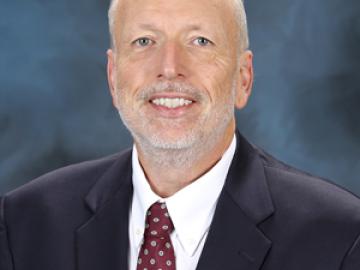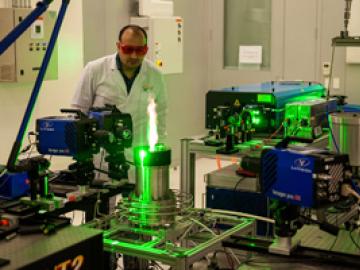Filter News
Area of Research
- (-) Clean Energy (19)
- (-) Supercomputing (15)
- Advanced Manufacturing (3)
- Biological Systems (3)
- Biology and Soft Matter (3)
- Building Technologies (3)
- Chemical and Engineering Materials (2)
- Chemistry and Physics at Interfaces (5)
- Climate and Environmental Systems (4)
- Computational Biology (1)
- Computational Chemistry (4)
- Computational Engineering (1)
- Computer Science (1)
- Earth Sciences (1)
- Energy Frontier Research Centers (6)
- Fuel Cycle Science and Technology (1)
- Functional Materials for Energy (8)
- Geographic Information Science and Technology (1)
- Materials (31)
- Materials for Computing (7)
- Materials Synthesis from Atoms to Systems (8)
- Materials Under Extremes (5)
- Neutron Data Analysis and Visualization (2)
- Neutron Science (6)
- Nuclear Science and Technology (5)
- Nuclear Systems Technology (1)
- Quantum Condensed Matter (2)
- Renewable Energy (1)
- Sensors and Controls (1)
- Transportation Systems (3)
Media Contacts

The U.S. Department of Energy’s (DOE) Oak Ridge Leadership Computing Facility (OLCF) has signed a contract with IBM to bring a next-generation supercomputer to Oak Ridge National Laboratory (ORNL).

When Department of Energy and Oak Ridge National Laboratory researcher Yan Xu talks about “islanding,” or isolating, from the grid, she’s discussing a fundamental benefit of microgrids—small systems powered by renewables and energy storage devices. The benefit is that microgrids can disconnect from larger utility grids and continue to provide power locally.

Researchers studying iron-based superconductors are combining novel electronic structure algorithms with the high-performance computing power of the Department of Energy’s Titan supercomputer at Oak Ridge National Laboratory to predict spin dynamics, or the ways electrons orient and correlate their spins in a material.

Dr. Michael Simpson, Oak Ridge National Laboratory Corporate Fellow and Group Leader of the Nanofabrication Research Laboratory Group in the Center for Nanophase Materials Sciences (CNMS) at ORNL, has been appointed the next director of the UT-ORNL Joint Institute for Biological Sciences (JIBS). This appointment is in addition to his role at CNMS.

Throw a rock through a window made of silica glass, and the brittle, insulating oxide pane shatters. But whack a golf ball with a club made of metallic glass—a resilient conductor that looks like metal—and the glass not only stays intact but also may drive the ball farther than conventional clubs. In light of this contrast, the nature of glass seems anything but clear.

Researchers at the Department of Energy’s Oak Ridge National Laboratory have demonstrated an additive manufacturing method to control the structure and properties of metal components with precision unmatched by conventional manufacturing processes. Ryan D...

Complex oxides have long tantalized the materials science community for their promise in next-generation energy and information technologies. Complex oxide crystals combine oxygen atoms with assorted metals to produce unusual and very desirable properties.

If you were to do an internet search for what causes engine knock, you’d receive a number of answers. Ramanan Sankaran—a scientific computing specialist at the Oak Ridge Leadership Computing Facility (OLCF), a Department of Energy Office of Science User Facility located at Oak Ridge National Laboratory, and joint faculty member at the University of Tennessee—wants to take Titan through the fuel lines to help identify the right one.

When Orlando Rios first started analyzing samples of carbon fibers made from a woody plant polymer known as lignin, he noticed something unusual. The material’s microstructure -- a mixture of perfectly spherical nanoscale crystallites distributed within a fibrous matrix -- looked almost too good to be true.

Blowing bubbles may be fun for kids, but for engineers, bubbles can disrupt fluid flow and damage metal.




